


To the moon and beyond
Photos by Lane McLaughlin, Kathy F. Atkinson and NASA July 19, 2019
UD researchers point to future as the world marks Apollo 11’s 50th anniversary
By today’s standards, the computing power was pretty feeble. The science was thin in some areas. And the perils of putting a human being on the Earth’s moon were even greater than we realized at the time.
But the extraordinary feat accomplished 50 years ago, when U.S. astronauts Neil Armstrong and Buzz Aldrin became the first humans to walk on the moon in NASA’s historic Apollo 11 mission, remains one of humanity’s greatest accomplishments.
“We were venturing into the unknown,” said Harry Shipman, the University of Delaware’s Annie Jump Cannon Professor Emeritus of Physics and Astronomy. “And it’s kind of amazing how much we didn’t know.”
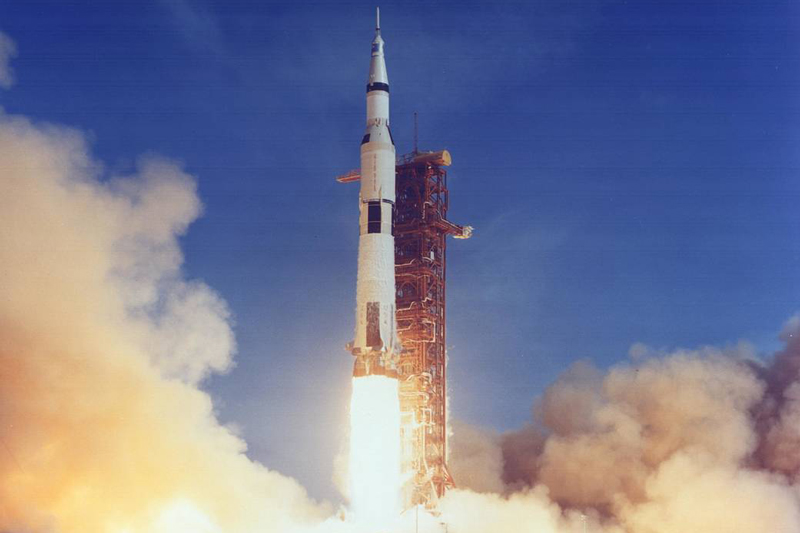
Shipman and dozens of other University researchers have contributed much to our understanding of space and space exploration in the half century since that first lunar walkabout on July 20, 1969.
For example, William Matthaeus, Unidel Professor of Physics and Astronomy and director of Delaware Space Grant, studies the sun, especially the powerful stream of protons, electrons and ions that surges from it in what is known as the “solar wind.”
The Apollo 11 mission included a solar wind experiment in its long list of “to-dos,” but that field of study was quite new and far less was known about the dynamics in play than is known now.
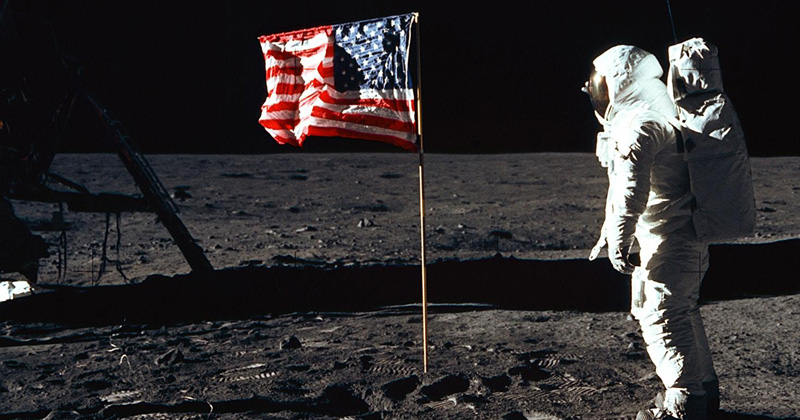
“We know so much more about the sun now,” Matthaeus said. “If you don’t know about the sun and you don’t know about the solar wind, you don’t know what might happen. There was no big solar flare or coronal mass ejection while they were up there. If there had been, they could have died. So we kind of lucked out on that.”
A coronal mass ejection event that would have been life-threatening to astronauts occurred in August 1972, just three months after Apollo 16 and three months before the final Apollo mission, Apollo 17.
Exploratory orbits had occurred before Apollo 11 and the Soviet Union had sent dogs into space to see how they would fare.
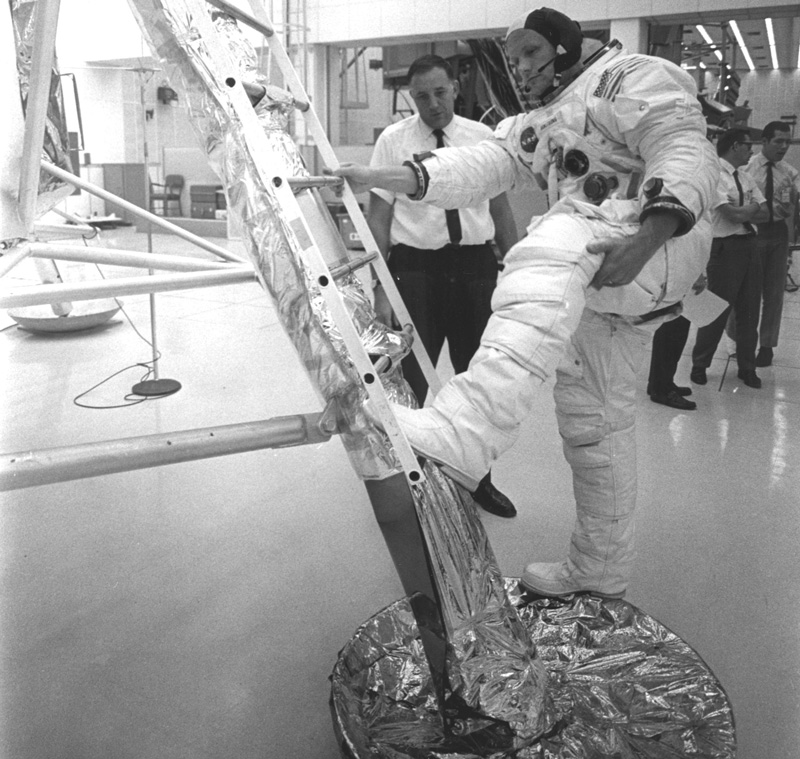
But no one had actually been there before, so after Armstrong’s “one small step for man, one giant leap for mankind,” the first human on the moon made a quick report to Mission Control in Houston.
The moondust, he said, was about an inch thick, he said, thick enough for his boot to leave a print.
There had been theories that the moon dust might be so deep that the lunar module would sink into it or that it might be combustible and catch fire when samples were brought into the lunar module.
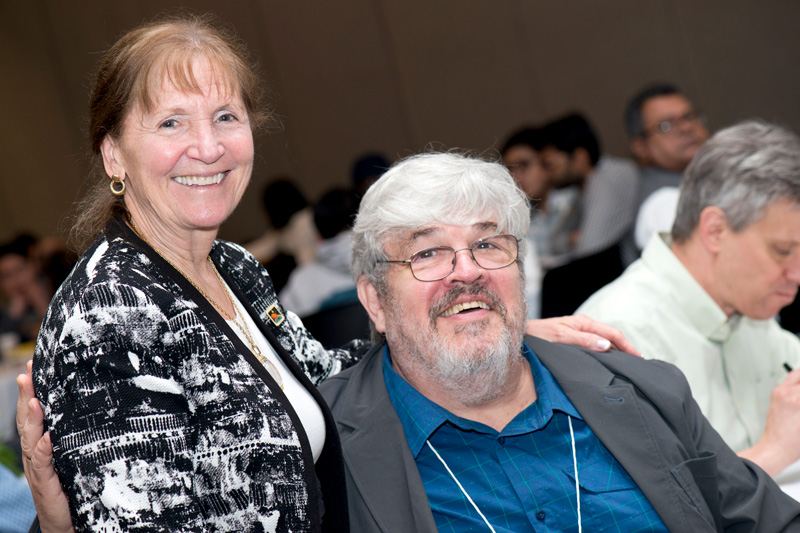
“Going to the moon back then was much like it was for [explorers] Columbus, Vazquez, Marco Polo — they didn’t really know what they would find,” Matthaeus said.
In all, the Apollo program sent 24 people to the moon (12 walked on its surface) during a period of just under four years — December 1968 to December 1972.
With 50 years of intervening research, much better predictions of conditions and requirements are possible now.
So are we safer or in greater peril?
“Both,” Shipman said. “You can’t make conclusions based on the shuttle flights, but we did lose two shuttles and 14 astronauts.”
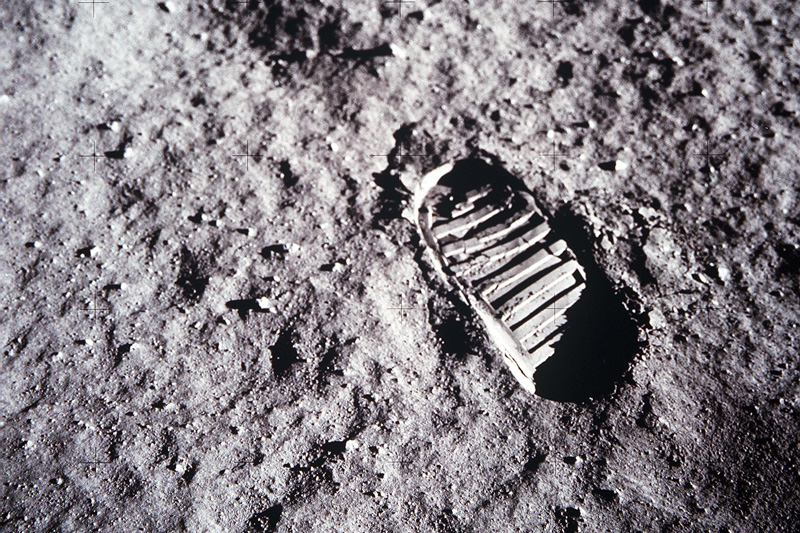
The space shuttle fleet had extraordinary successes in its 30-year, 135-mission run in low Earth orbit — launching and repairing satellites, the Hubble Space Telescope, building the International Space Station — but also suffered catastrophic loss in the Challenger (1986) and Columbia (2003) disasters.
A former Blue Hen — Theodore Freeman, who attended UD for a year before entering the U.S. Naval Academy — was the first NASA astronaut to perish during service to the space program. He was selected in the third group of NASA astronauts in October 1963, but died on Oct. 31, 1964, when a goose struck the T-38 he was flying over Houston’s Ellington Air Force Base, near what is now the Johnson Space Center.
Though UD researchers were not directly involved in the Apollo 11 mission, one — Billy Price Glass, emeritus professor in geological sciences — studied lunar samples from all of the Apollo mission collections. UD alumni were involved in Apollo 11 and other Apollo missions. They are working, for example, with the creators of the Apollo Mission space suits — ILC Industries, which is now ILC Dover. ILC’s Apollo chief project engineer and later company president, Homer “Sonny” Reihm graduated with an engineering degree from UD in 1960 and was profiled in the University’s magazine in 2017. Now retired, Reihm was at Mission Control in Houston during the Apollo 11 flight.
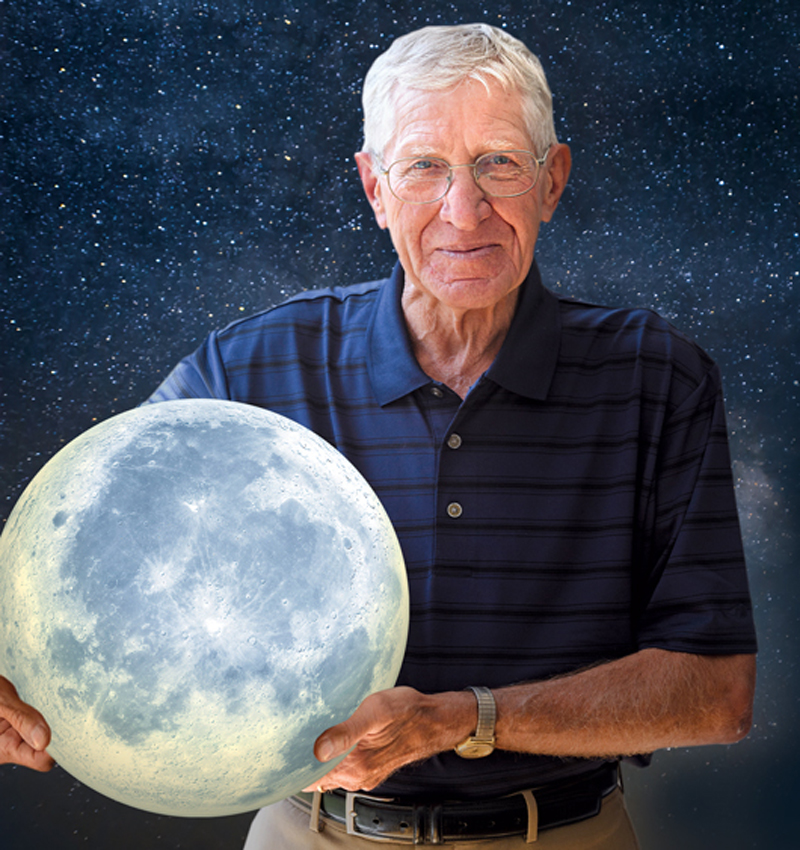
A UD doctoral graduate later served as an astronaut — Lodewijk van den Berg, who also earned his master’s degree at UD under the late Prof. Karl Böer, the solar technology pioneer who died in 2018. Van den Berg, an expert in the growth of single-crystal chemical compounds, spent a week in space in 1985 as a payload specialist aboard the Space Shuttle Challenger.
Shipman, who arrived at UD in 1974, studied stars with help from instruments such as the Copernicus satellite, the International Ultraviolet Explorer and the Hubble Space Telescope. An expert in stars known as “white dwarfs,” he also wrote several books, including Humans in Space in 1989.
Apart from Apollo missions and space travel, Norman F. Ness, emeritus professor of physics and astronomy, was principal investigator for magnetic field experiments carried by more than 21 Explorer, Mariner, Pioneer, Helios and Voyager spacecraft projects spanning more than 50 years. He also was a co-investigator on the USA Mars Global Surveyor and the Advanced Composition Explorer.
In the past two decades, NASA has awarded almost 200 grants to UD researchers, totaling more than $59 million.
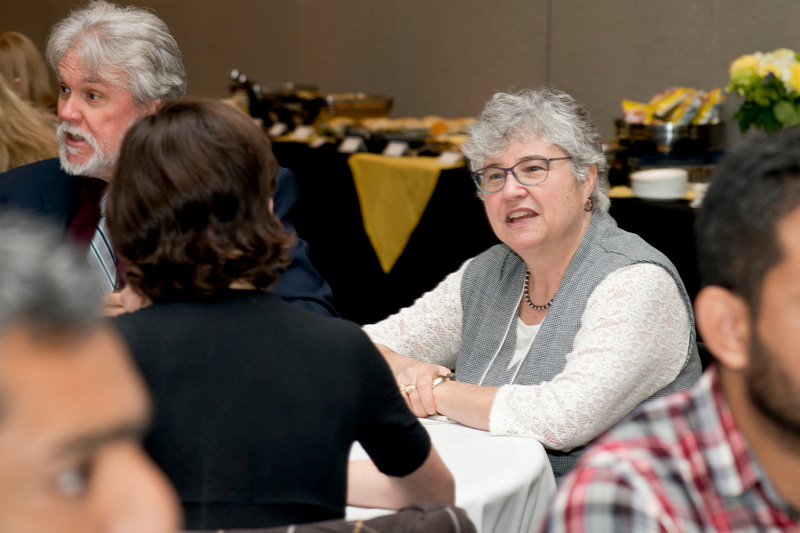
Many are working to answer questions that must be addressed for NASA’s new lunar exploration plans, which includes another lunar landing, planned for 2024, followed by establishment of an ongoing presence on the moon and preparation for a manned mission to Mars.
ILC Dover now is developing prototype suits that astronauts could wear during upcoming missions to the moon and Mars. Scientists at UD’s Center for Composite Materials, founded in 1974, are contributing much research and effort toward the Z2 spacesuit model.
Norm Wagner, Unidel Robert L. Pigford Chair in Chemical and Biomolecular Engineering, and UD alum Rich Dombrowski, continue their contribution to new NASA technology through the STF Technologies company they founded. Its Shear Thickening Fluid, a near-magical substance that makes materials stronger on impact yet maintains flexibility and maneuverability, is of keen interest to NASA for use in spacesuits, gloves and other materials that must defend against sharp objects, projectiles, abrasions and assorted perils that may emerge outside of a spacecraft.
A few examples of recent NASA-supported UD research include:
Tingyi Gu, assistant professor of electrical and computer engineering, who is working on miniature photonic instruments for space communications.
CCM Assistant Director for Composite Engineering Danny Molligan and Composite Design Manager Jason Etherington, for continued work on composite materials for the spacesuit’s hard upper torso.
Matthaeus and Prof. Michael Shay, both of whom are part of NASA’s MMS (Magnetospheric Multiscale) mission that studies space weather
Matthaeus’ ongoing study of the solar wind and the heliosphere, including NASA’s Parker Solar Probe mission, for which Matthaeus helped to lay the foundation.
John Clem, research associate professor in physics and astronomy, who is studying interplanetary low-energy electrons and positrons with Prof. Paul Evenson, and studying extreme-energy particle astrophysics with Prof. David Seckel.
CCM Senior Scientist and Assistant Professor Bazle Haque, for studies of impact performance, and characterization and modeling of composite materials
CCM Associate Director Suresh Advani for studies of thin-ply composites design technology and applications
Bennett Maruca, assistant professor of physics and astronomy who is involved in NASA’s CURIE mission, for graphical software to analyze multi-instrument measurements of solar-wind ions
Much more work is underway and many more questions will arise as lunar research expands.
“If we’re ever going to learn to colonize other planets or go to Mars, we have to learn on the moon first,” Matthaeus said.

“I’d like to see the people of the world get excited again in terms of accomplishing this stuff. It’s probably true that eventually we’ll have to inhabit other planets if our species is going to survive.”
During a daylong seminar organized by Delaware Space Grant at UD in May — “Apollo at 50: To the moon and beyond" — keynote speaker Lt. Col. Willie B. Williams, research portfolio manager in the International Space Station Research Office at NASA's Johnson Space Center, told students to muster their courage and accept the challenges inherent in space exploration and research.
"A lot is going to come to you that you just have to fight through — not some of the time, but all of the time,” Williams said. “You have to have the courage to fight through."
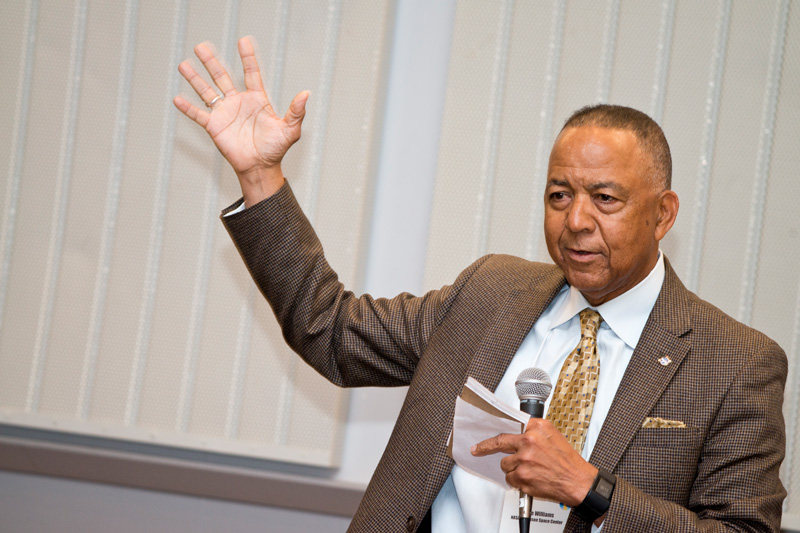
More on UD space exploration
Space suit tailor
Homer “Sonny” Reihm, UD Class of 1960, was at Mission Control in Houston during the Apollo 11 mission because he was the chief project engineer for ILC Industries (now ILC Dover), which made the space suits for Apollo missions. Reihm was profiled in 2017 in UD Magazine.
Link: https://www.udel.edu/udaily/2019/july/apollo-space-suits-dover-ilc-industries-homer-sonny-reihm/
Reaching for the sun
UD’s William Matthaeus, Unidel Professor of Physics and Astronomy and director of Delaware Space Grant, helped lay the foundation for the Parker Solar Probe, which launched in 2018 and will explore the sun.
Undergraduate intern at NASA
UD rising senior Natalie Zimmerman was an intern during the summer of 2018 at NASA’s Johnson Space Center in Houston. Zimmerman, who is from Scotch Plains, N.J., is an Honors geology major, with minors in computer science and chemistry. Her internship was supported by the UD-based Delaware Space Grant Consortium. Zimmerman shared her experiences as a NASA intern in three first-person stories with UDaily. The last story has links to the first two.
Extra, extra! Read all about it!
The UD Research magazine has archival newspaper coverage from Delaware publications that told First State readers about the Apollo 11 mission.
Link: https://research.udel.edu/2018/03/20/man-steps-onto-moon/
Links of interest
The Delaware AeroSpace Education Foundation will host an “Apollo at 50” celebration from 1-4 p.m., Saturday, July 20 at the DASEF Outpost, 585 Big Oak Road, Smyrna, Delaware. The event is free to the public and sponsored by the Delaware Space Grant.
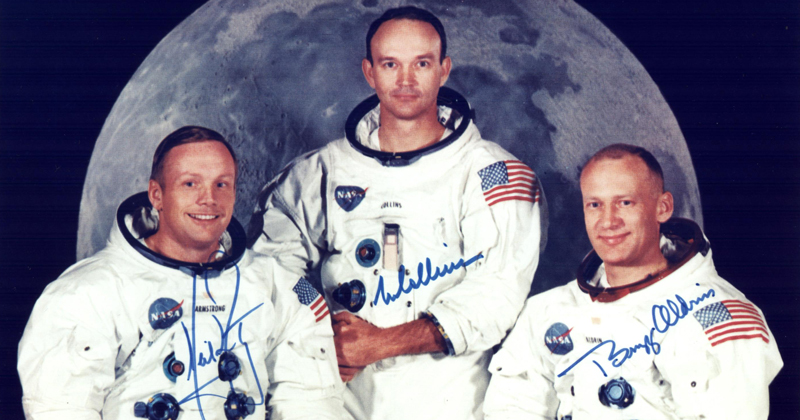
Contact Us
Have a UDaily story idea?
Contact us at ocm@udel.edu
Members of the press
Contact us at 302-831-NEWS or visit the Media Relations website

